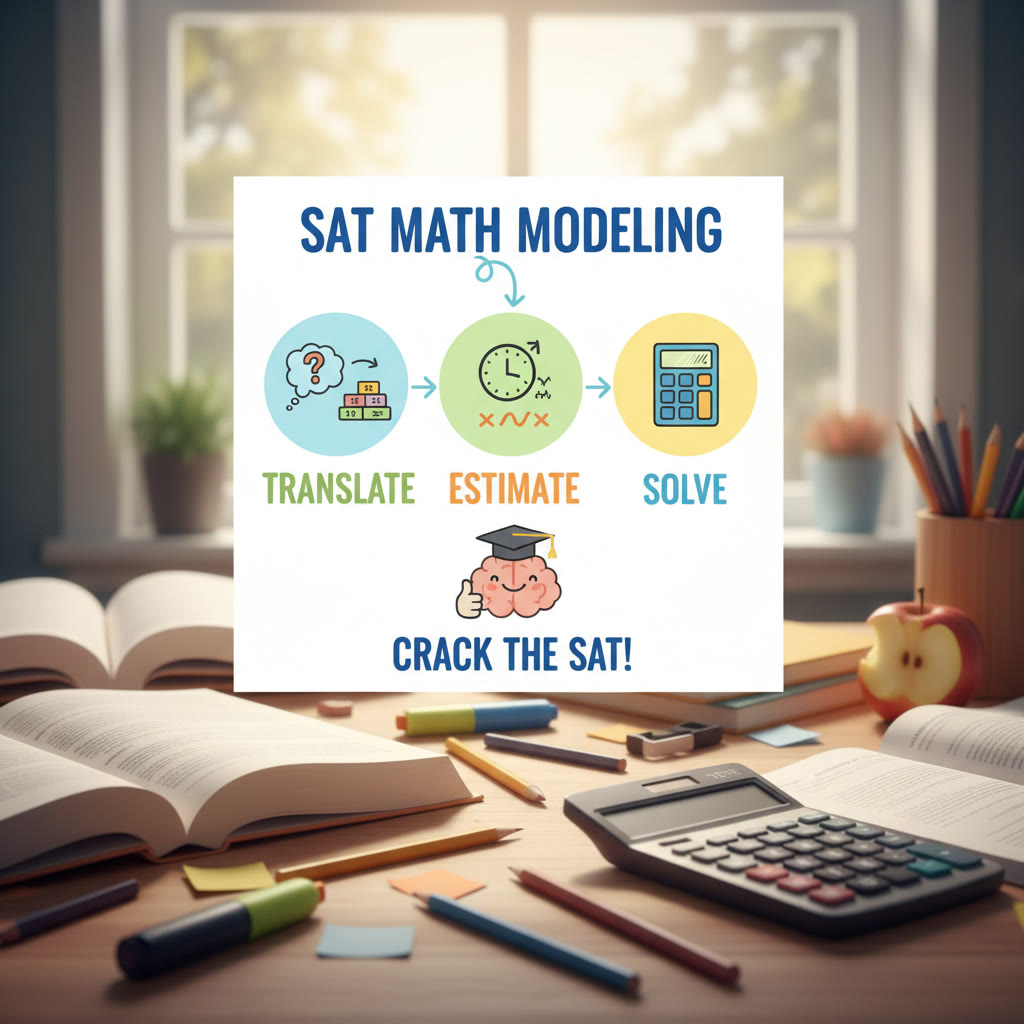Why Analytical Thinking Matters for the SAT
Take a breath. The SAT is not a memory contest or a vocabulary recital — it’s a thinking test. That might sound obvious, but the distinction matters. Analytical thinking is the habit of breaking complex problems into parts, spotting patterns, evaluating evidence, and drawing logical conclusions. When you sharpen that habit, the SAT stops feeling like an unpredictable obstacle and becomes a predictable set of problems you can solve with method and confidence.
What I mean by analytical thinking
Analytical thinking is less about knowing more facts and more about using what you know effectively. It’s the mental toolkit you use to:
- Dissect a reading passage and map the author’s argument.
- Translate a word problem into equations and logic.
- Evaluate answer choices quickly and discard the wrong ones.
- Spot an assumption or a flaw in a reasoning chain.
On the SAT, these skills show up across every section: the Evidence-Based Reading and Writing, the Writing & Language questions, and both math blocks (no-calculator and calculator). The now-discontinued SAT Essay no longer appears on the test, but the analytical habits it encouraged remain central to most items you’ll face.
Analytical thinking vs. rote memorization: why the difference matters
Rote memorization makes you fast at recall — great for definitions or formulas — but the SAT asks you to apply knowledge in new settings. Consider a math question that gives a weird real-world context: memorizing formulas won’t get you far if you can’t model the situation or test assumptions. Analytical thinking helps you adapt knowledge to novel problems, which is the core of the SAT’s design.
How the SAT tests analytical thinking, section by section
Evidence-Based Reading
Reading passages on the SAT are short but densely packed. The test rewards students who can:
- Identify the main idea and the author’s purpose.
- Track shifts in tone or perspective.
- Evaluate evidence and infer unstated conclusions.
Example: a paragraph contrasts two scientific theories and favors one. A question might ask which sentence best supports the author’s claim. Analytical readers know to locate the supporting sentence, weigh its directness, and choose the one that most clearly ties to the claim — not merely the most interesting sentence.
Writing & Language
This section tests editing and clarity. Analytical thinkers notice redundancies, logical missteps, and subtle shifts in meaning. Questions often require you to maintain consistency in tone and purpose while improving structure — not just correcting grammar. Approach each question by asking, ‘What is the paragraph trying to communicate, and which choice best preserves that while improving clarity?’
Math (No-Calculator and Calculator)
The math section is rich ground for analytical skills. Problems often present real-world scenarios — rates, mixtures, growth models — where you must translate words into equations, choose a strategy, and verify your result. The best students model the situation, estimate an answer to check plausibility, and eliminate choices that violate obvious constraints.
Data interpretation and problem-solving
Graph reading and table questions test your ability to extract the right piece of information, not every piece. Analytical thinking helps you ask precise questions of the data: What variable changes? Over what interval? Are units consistent? Often the right answer is the one that respects the data’s story.
Concrete analytical strategies that work on the SAT
1. Active reading: annotate like you mean it
Underline the claim, circle the evidence, and jot a one-phrase summary in the margin. These micro-notes reduce cognitive load because you’ve externalized the structure of the argument. On test day, your annotations become a roadmap when you need to revisit the passage.
2. Predict before you peek
For reading and math, train yourself to predict an answer or an approach before you look at choices. In reading, predict what the correct answer will say in your own words. In math, sketch an estimate or compute a quick mental check. This reduces answer-choice traps and prevents you from being lured by plausible-sounding but incorrect options.
3. Work backward from answer choices
When choices are numbers or specific phrasings, plug them into the problem. This is especially powerful in algebra and data questions where substitution quickly reveals the correct option or eliminates impossibilities.
4. Break problems into smaller steps
If a question looks big, divide it. Ask: What is the first thing I need to find? What assumptions must hold? Solving smaller sub-questions keeps you from getting overwhelmed and reduces careless mistakes.
5. Use estimation strategically
Before precise calculation, estimate. If your estimate is 75 and the exact answer is 7.5, you probably modeled the units incorrectly. Estimation is a sanity check and helps you choose reasonable answers quickly when time is tight.
6. Eliminate, then choose
Often the path to the right answer is to discard three bad ones. Even when you cannot prove a choice right immediately, you can frequently prove several choices wrong. That raises your odds and focuses attention where it matters.
Walkthroughs: applying analytical thinking to two sample problems
Reading passage excerpt (short example)
Passage summary: An author argues that urban gardens increase community resilience by improving food access and building social ties. A later paragraph presents a counterpoint: gardens require ongoing resources and may only serve certain neighborhoods.
Question: Which sentence would best support the claim that urban gardens strengthen social ties?
- Predict: The correct sentence will explicitly mention interaction, community events, or shared maintenance.
- Scan: Find sentences about neighbors planting together or sharing crops.
- Choose: The sentence that mentions ‘neighbors coordinating planting schedules and sharing harvests’ is a direct match; a sentence about ‘improved food access’ supports resilience but doesn’t directly address social ties.
That process — predict, scan for evidence, and pick the option that matches the predicted idea — is analytical and repeatable.
Math example with reasoning
Problem: A rectangle’s width increases by 20% and its length decreases by 10%. Which choice gives the percent change in area?
- Step 1 — Model: If original dimensions are W and L, original area A = WL.
- Step 2 — Apply changes: New width W’ = 1.2W; new length L’ = 0.9L.
- Step 3 — New area A’ = W’L’ = (1.2W)(0.9L) = 1.08WL = 1.08A.
- Step 4 — Percent change = (1.08A – A)/A = 0.08 = 8% increase.
Analytical thinking here is about modeling and keeping track of multiplicative changes rather than trying to memorize ‘percent change’ rules.
Study plan and practice schedule: turn habits into results
Here’s a practical weekly framework focused on analytical skills. It assumes 8–12 hours of SAT study per week, but you can scale the times.
| Day | Focus | Analytical drill | Time |
|---|---|---|---|
| Monday | Reading | Active reading + passage mapping (shade claims, evidence) | 1.5 hr |
| Tuesday | Math (No calc) | Model word problems, predict answers, estimation checks | 1.5 hr |
| Wednesday | Writing & Language | Sentence-level logic, concision edits, tone checks | 1 hr |
| Thursday | Math (Calc) | Data interpretation and multi-step problems | 1.5 hr |
| Friday | Mixed practice | Timed sets with post-review focusing on thought process | 2 hr |
| Weekend | Full practice test or focused drills | Simulated test conditions + debrief of analytical missteps | 3–4 hr |
Notice the emphasis on debriefs. Analytical improvements often come not from the initial attempt but from reviewing why you answered the way you did and how you could have reasoned more efficiently.
Common pitfalls and how analytical thinking helps avoid them
Pitfall: Falling for the ‘sounds right’ trap
Some choices seem plausible because they contain buzzwords or match part of the passage. Analytical readers test fit: does the choice directly support the question stem? If not, it’s a trap.
Pitfall: Jumping to a numeric answer without checking units
Conversion errors and unit mismatches are frequent in math. Analytical practice includes routinely confirming units and performing quick sanity checks (e.g., if you’re calculating time in hours, does the numeric magnitude make sense?).
Pitfall: Ignoring question scope
Some questions ask about a specific sentence or a paragraph. If you answer for the whole passage, you may read beyond the scope. Discipline yourself to answer only what is asked; analytical thinking means defining the question before solving it.
How tutoring accelerates the development of analytical skills
Analytical thinking improves faster with guided practice than with solo drilling. Personalized tutoring—like Sparkl’s personalized tutoring—can make a real difference because tutors do three things students rarely do on their own:
- They model analytical approaches out loud, showing how to annotate and think through choices.
- They provide tailored study plans that target weaknesses and build on strengths, rather than offering generic practice sets.
- They give timely feedback and adjustments, and when combined with AI-driven insights, they can quickly identify recurring patterns of error and adapt practice accordingly.
Sparkl’s 1-on-1 guidance and expert tutors, paired with adaptive coaching, help students turn isolated strategies into consistent habits. Instead of just doing more questions, you develop a reproducible thought process for solving them — which is what raises scores reliably.
Measuring progress: what to track
Don’t just track raw scores. Analytical growth shows up in subtler metrics:
- Time per question on average, and how that changes with familiarity.
- Rate of avoidable errors (misreading, calculation mistakes, misapplied rules).
- Ability to eliminate incorrect options faster — watch how often elimination leads to a correct choice.
- Clarity in debrief summaries: can you explain why each wrong answer was wrong?
Use a simple log: after each practice set, write one-sentence reflections about your approach. Over weeks, those sentences reveal recurring weak spots to fix.
Real-world benefits beyond the SAT
Analytical thinking isn’t just for tests. It’s how you read news critically, evaluate claims, manage time and resources, and navigate complex decisions in college and work. When you practice analysis for the SAT, you’re cultivating a lifelong skill: the ability to move from data and words to clear, defensible conclusions.
Putting it together: a short checklist to use during the test
- Read the question carefully before rereading the passage.
- Annotate: label claim, evidence, counterpoint.
- Predict an answer in one phrase.
- Eliminate at least two choices before deciding.
- Estimate or sanity-check numeric answers.
- Log a 30-second note after each section on what slowed you down — review it after the test.
Final thoughts: make analysis habitual, not occasional
Improving analytical thinking is like strengthening a muscle: the more deliberate the practice, the faster you’ll see gains. The SAT rewards a calm, methodical mind that asks precise questions, uses evidence, and tests assumptions. If you combine that approach with consistent practice, and when appropriate, targeted support like Sparkl’s personalized tutoring — which offers 1-on-1 guidance, tailored study plans, expert tutors, and AI-driven insights — you’ll find that the test becomes a measure of your thinking rather than a measure of your stress.


Start today: pick one analytical habit — predict-before-you-peek, annotate passages, or estimate answers — and practice it consistently for two weeks. Note how it changes not only your SAT accuracy but your confidence. That steady, confident change is the best kind of preparation there is.

















No Comments
Leave a comment Cancel